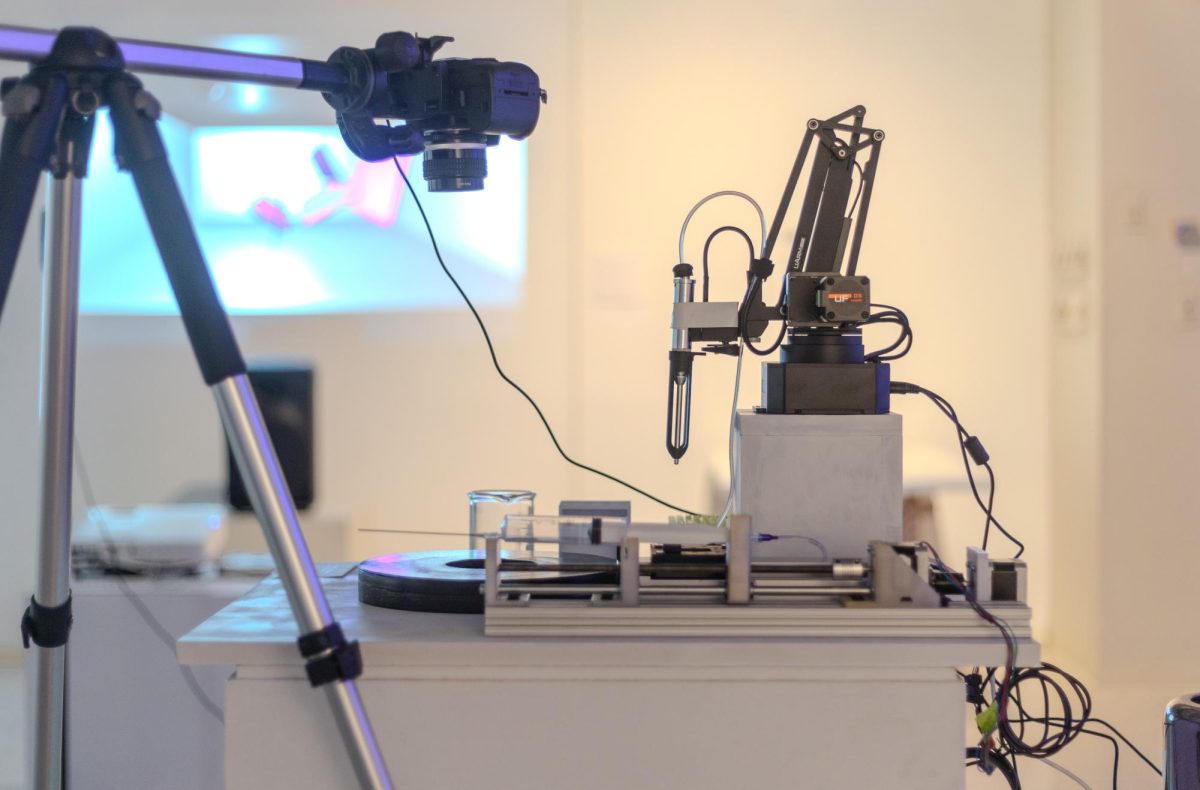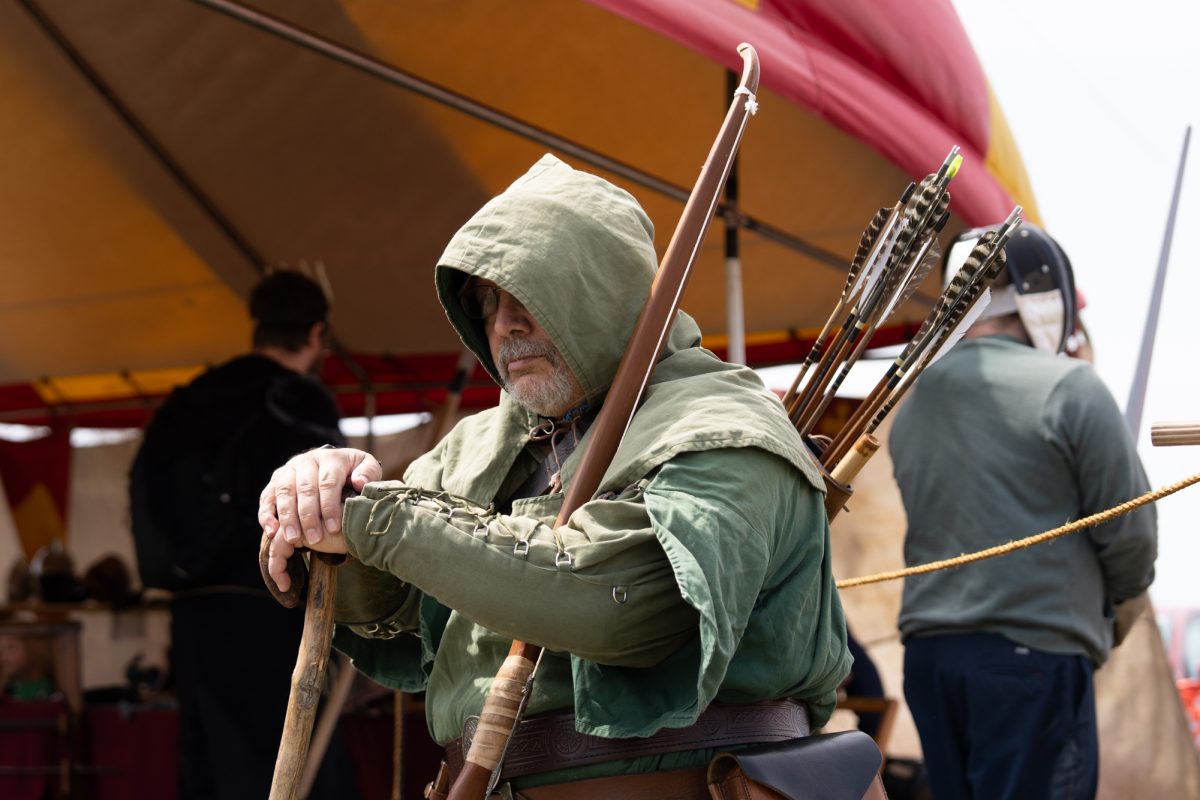At the back of gallery 181, past a collection of paintings, ceramics and pictures, sits a podium with a camera, a petri dish and a pipette attached to a robotic arm. In the dish is an active bacteria sample, but this isn’t any bacteria sample; this sample has been manipulated using artificial intelligence.
In 2019, Johnny DiBlasi, an assistant professor in the department of art and visual culture, traveled to South Korea to complete a residency at the International Symposium on Electronic Arts. During his residency, DiBlasi helped form “Phylum,” a new art collective.
DiBlasi said that he and his collaborators, Bello Bello and Carlos Castellanos, formed the collective after they met in South Korea. He said that a shared curiosity for technology, art and biology was the reason they joined forces.
“We realized that we had these shared interests, and our work was very similar, although we had very different skills,” DiBlasi said.
“Beauty: A Machine-Microbial Artwork,” the collective’s most recent project, uses robotics, artificial intelligence and biology to create the most beautiful bacteria pattern possible.
“This is a big project,” DiBlasi said. “It has a lot of moving parts. It’s very technically complex.”
The project consists of bacteria that are manipulated by placing a solution onto a petri dish with an active bacteria culture that either attracts or repels future growth. These placements are decided by an artificial intelligence model that looks at the bacteria’s growth. DiBlasi says that the model they used originated from a car racing video game.
“The model learns basically how to best predict the next frame and what to do with the car… we took that model and adopted it to our own,” DiBlasi said.
DiBlasi’s bacteria are currently part of “Beauty Investigated: Dilemmas, Projects and Promises,” an exhibition hosted by the College of Design.
Ingrid Lilligren, a professor of art and visual culture, curated the exhibition in collaboration with DiBlasi. Lilligren said she hopes that the different perspectives of beauty represented in the exhibition spark a conversation on what beauty means.
“I hope that students start to think about beauty differently and that they begin to have among themselves conversations about it,” Lilligren said.
Agustin Oropeza, a junior majoring in industrial design, said they enjoyed the exhibition but found that some of the projects didn’t fit their definition of beauty.
“Beauty for me, I find it grotesque,” Oropeza said. “I find it to be a lot of different things and just kind of like to me personally, I like weird things.”
“Beauty Investigated: Dilemmas, Projects and Promises” will be open at the College of Design in gallery 181 from 8 a.m. to 5 p.m., Monday through Friday, until Feb. 22.








